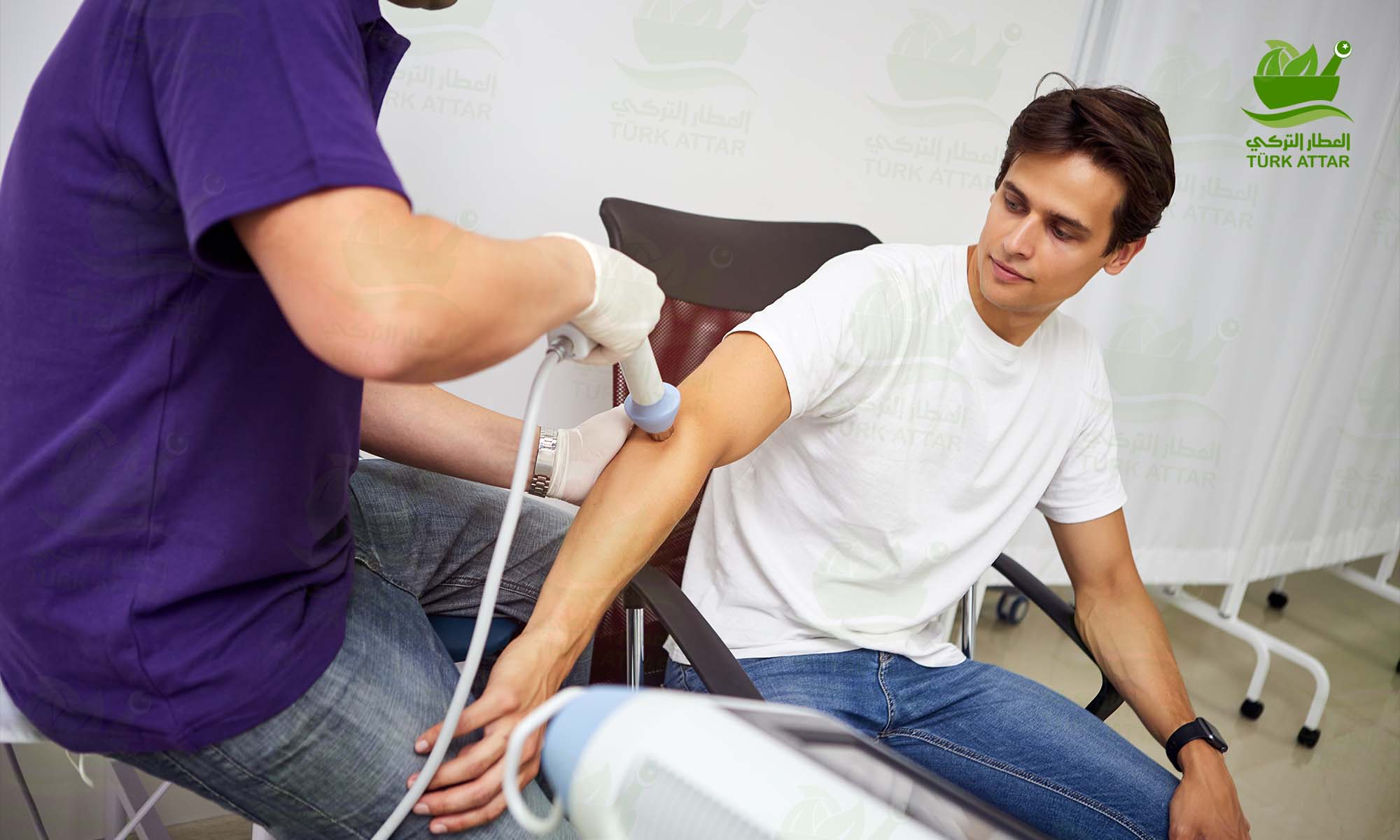
ما هو مرفق لاعب التنس (التهاب اللقيمة الجانبي)؟
هي إحدى الإصابات الناجمة عن فرط استخدام المرفق. وكما يمكن أن يُفهم من الاسم، فإن لعبة التنس هي أحد أسباب ظاهرة "مرفق لاعبي التنس"، لكن هنالك أسباباً شائعة أخرى كثيرة للإصابة بهذه الحالة. يظهر الألم بشكل أساسي في المكان الذي تتصل فيه أوتار عضلات الذراع بالنتوء العظمي في القسم الخارجي من المرفق
مرفق لاعب التنس
نقطة البداية للعضلات التي تسحب الرسغ للخلف في جسم الإنسان هي المنطقة المعروفة باسم اللقيمة الجانبية. مرفق لاعب التنس، واسمه الطبي التهاب اللقيمة الجانبي، يحدث نتيجة لتمزقات صغيرة وتنكس في مفترق العضلات والعظام في هذه المنطقة بسبب التفسخات المتكررة. يتسبب الاستخدام المفرط لليد والمعصم في حدوث توتر في عضلات الساعد، وفي هذه الحالة يظهر مرفق لاعب التنس نفسه.
من الذي يصاب بمرفق التنس؟
كما يوحي الاسم، فإن هذا المرض، الذي يظهر بشكل متكرر في الرياضيين الذين يمارسون رياضات المضرب والتنس، يمكن أن يظهر أيضًا في الأفراد الذين ينتمون إلى المجموعات المهنية التي تجهد عضلات أذرعهم في الوظائف المكتبية. إذا قمت بحركات تضغط الرسغ لأكثر من ساعتين في اليوم، تزداد احتمالية عدم راحة مرفق التنس. يمكننا عرض الأمثلة التالية من المجموعة المهنية حيث يتم مشاهدة مرفق التنس بشكل متكرر:
السباكين
الرسامين
النجارين
يمكن رؤيته بشكل متكرر في ربات البيوت اللائي يقمن بالأعمال المنزلية بشكل مكثف.
الفئة العمرية التي يكون فيها مرفق التنس أكثر شيوعًا هي الفئة العمرية 30-50.
ما هي أعراض مرفق التنس؟
أهم عرض لمرفق التنس هو وجود ألم في الجزء الخارجي من الكوع. يقع هذا الألم في البروز العظمي على الحافة الخارجية للكوع ويمتد إلى الساعد. على سبيل المثال، قد تشعر بهذا الألم في مرفقك عند رفع غلاية أو إبريق ثقيل. بصرف النظر عن هذا، يمكننا سرد أعراض مرفق التنس التي يمكن رؤيتها على النحو التالي:
الحساسية والألم عند الحافة الخارجية للكوع
ألم في كوعك عند رفع شيء ثقيل
ألم عند رفع أو شد اليد والمعصم،
الشعور بالألم عند مسك شيء ما، أو إمساك يدك بقبضة اليد، أو لف مقبض الباب.
الألم شائع جدًا عندما يتعلق الأمر بمرفق التنس. إذا رفعت معصمك إلى الوراء، تزداد شدة هذا الألم تدريجيًا. هذا الألم، الذي كان منخفض الشدة في البداية، يزداد سوءًا طالما استمررت في القيام بحركات قسرية. إلى جانب الألم، قد يحدث أيضًا ضعف في عضلات الذراع.
تمارين مرفق التنس (التهاب اللقيمة الجانبي) التي يمكن إجراؤها في المنزل
يمكننا سرد تمارين مرفق التنس التي يمكنك القيام بها في المنزل على النحو التالي:
1) حركة المعصم: مع الكوع والكتف والمعصم في خط، اضغط على الحائط باليد 90 درجة فوق الرسغ. كرر هذا التمرين 10 مرات.
2) حركة الساعد: الوقوف على الجانب مع ثني الكوع 90 درجة، اقلب راحة اليد. استمر على هذا النحو لمدة 5 ثوانٍ بالضبط ثم اقلب راحة اليد مرة أخرى. في هذه الحالة، انتظر 5 ثوان. تمامًا مثل الخطوة الأولى من التمرين، قم بذلك لمدة 10
3) حركة الكوع: حرك كوعك بحيث تلامس راحة يدك كتفك. ثم استعادته. تمامًا مثل التمرين الأول والثاني، كرر هذا التمرين 10 مرات
4) حركات تقوية المعصم
-تمديد المعصم: أمسك بمطرقة أو علبة بحيث تكون راحة اليد متجهة لأسفل. ارفع هذا الوزن ببطء وأعده إلى موضعه الأصلي. كرر تمرين الرسغ هذا 10 مرات
-انثناء المعصم: أمسك شيئًا يتراوح بين متوسط 750 غرام -1 كجم مع توجيه راحة يدك لأعلى.
5) الكب والاستلقاء: امسك بمقبض المطرقة في يدك مع الكوع بزاوية 90 درجة. أدر معصمك ببطء لأعلى ولأسفل. كرر هذا التمرين 10 مرات.
